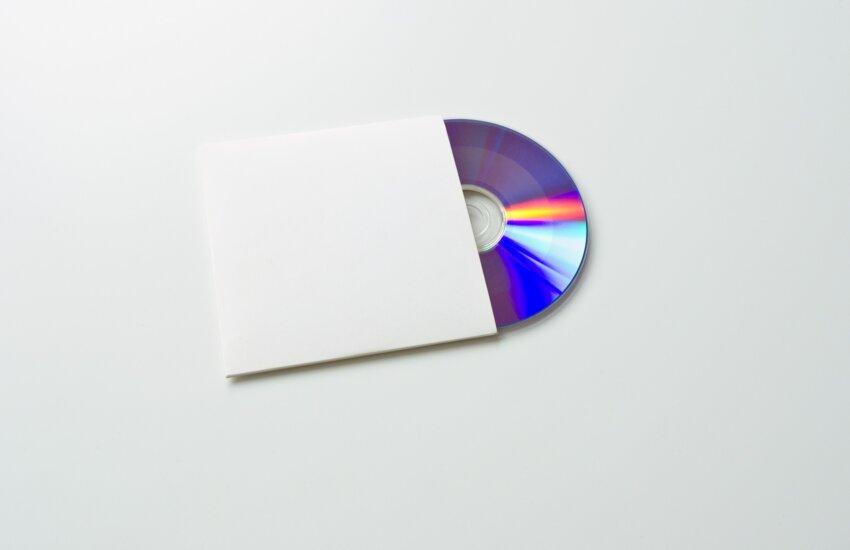Table of Contents
Optical Memory
Optical memories or Optical disks are alternate mass storage devices with huge capacity [up to 20 GB]. Higher density is achieved through tightly focused lasers which can access a very small storage area. Information is written to or read from an optical disk using a laser beam. Only one surface of an optical disk is used to store data. An optical disk is relatively inexpensive, and has a long life of at least 15 years. Since the read/write head does not touch the disk surface, there is no problem of disk wear and head crash. The main drawback of the optical disk system is its slow average access time.
Basic Types Of Optical Disks
1- CDROM [Compact Disk Read Only Memory].
2- WORM [Write Once Read Many] Or CDR [CD-Recordable].
3- Erasable Optical Disk.
4- DVD-ROM, DVD-R, and DVD-RAM.
Optical memory devices provide a huge storage capacity [up to 20 GB], at a lower cost. Information is written to or read from an optical disk using laser beam. An optical disk is relatively inexpensive and has a long life of at least 15 years. Since the read/write head does not touch the disk surface, there is no problem of head crash. The main draw back of the optical disk system is its slow average access time.
Many software companies offer both operating system and application software on CD-ROM today. This technology has been the main catalyst for the development of multimedia in computing because it is used in multimedia external devices such as video recorders and digital recorders [Digital Audio Tape] which can be used for the multimedia systems.
-
CD-ROM
CD-ROM technology uses a 12 centimeter [4.7-inch] compact disk [CDs] similar to those used in stereo music systems. Each disk can store more than 600 MB. That is approximately equivalent to 400 1.44 MB floppy disks or 300,000 double-spaced pages of text.
First of all, a master disk is prepared. On a master disk, a laser records data by burning permanent microscopic pits in a spiral track to represent 1. From master disk, CD-ROMs are produced on a mass scale. Then CD-ROM disk drives use a laser device to read the binary codes formed by those pits. For reading the data laser beam of less intensity is employed. A laser system needs 25mW for writing whereas 5mW for reading.
CD-ROMs use long spiral tracks to store data serially. The track is divided into blocks of the same size. A CD-ROM disk rotates at a variable speed so that pits are read by the laser at a constant linear speed. The speed of the disk is adjusted in such a way that the track possesses under the read/write head at a constant linear velocity.
- Advantages
1- High storing capacity.
2- Mass copy of information stored, which is very cheaper.
3- Removable disk from the computer, so suitable for archival storage. 5.25-inch disks store 650 MB of data.
- Disadvantages
1- Longer access time as compared to that of a magnetic hard disk [because locating a desired address involves first moving the head to the specific area then adjusting the rotating speed and then reading the address, and then to find and accessing the specific sector].
2- Information can not be updated because it is a read only [permanent] memory.
-
WORM Or CD-R [CD-Recordable]
CD-R [Compact Disk Recordable] is another optical disk technology. The user can record [write] their own data once on a CD with a CD-R Disk drive unit. After this recording user can read these data as many times as desired.
CD-R is suitable for data and files which are not to be changed. The user can store permanent data, information, and files for maintaining records. CD-R should be used because of:
1- High storing capacity.
2- Better reliability and long life.
3- Greater access time as compared to hard-disk.
-
Erasable Optical Disk Or CD-RW [CD-Rewritable]
The major limitation of CD-ROM and CD-R Disks is that recorded data can not be erased. However, CD-RW [CD-Rewritable] optical disk systems have now become available which record and erase data by using a laser to heat a microscopic point on the disk’s surface. CDRW are of:
1- Very high storing capacity. A 5.25-inch optical disk can store about 650.
2- It is more reliable and having long life.
3- Longer access time as compared to that of a hard-disk.
-
DVD-ROM, DVD-R, And DVD-RAM
DVD stands for Digital Video Disks or Digital Versatile Disks. DVD stores much more data than CD-ROM. Its capacities are 4.7GB, 8.5GB, and 20GB, and more. The capacity depends on whether it is a single layer, double layer; single-sided, or double-sided disks. DVD uses a laser beam of shorter wavelength than CD-ROM uses and therefore more tracks are used. Working principles of DVD disks are same as CD-ROM, CD-R, and CD-RW.
The Speed of CD-ROM or DVD-ROM is given in terms of nX, where ‘n‘ is an integer.
For Example 32X, in case of CD, X=150 KB/s, so 32X=32×150=4.8 MB/s. In case of DVD, X=1.38 MB/s.
DVD-R: It is a recordable DVD, the same as CD-R disk. The user can write data once on a DVD-R, then read the data as many times as required.
DVD-RAM: It is a rewritable DVD, the same as CD-RW disk. DVD-RAM uses a phase change technology to write, read and erase data.
Related Posts
Memory And Storage Devices: Magnetic Memory
Input And Output Devices
Classification Of Software
Evolution Of Operating System
Types Of Operating System

